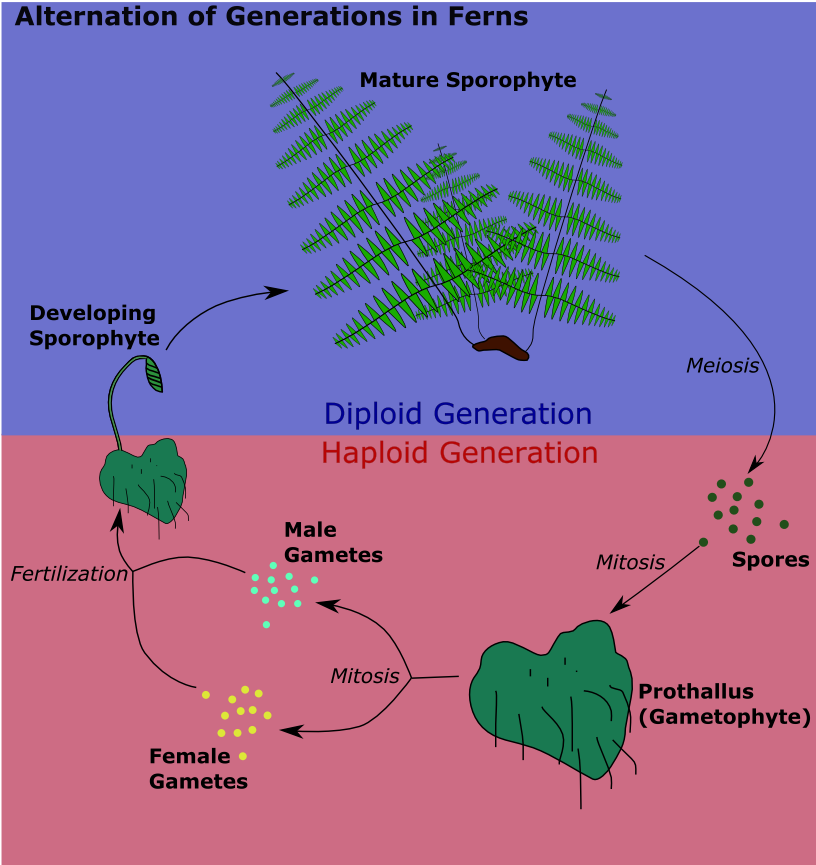1. How are ferns different from flowering plants or trees?
Flowering plants (including trees) produce seeds, while ferns produce spores. A chief difference between spores and seeds is that spores have very little stored food resources compared with seeds, and thus require more favorable conditions in order to successfully germinate. Seeds, therefore, are more resistant to harsh conditions and require less energy. Spores are usually produced in large numbers to increase the chances of survival.
2. Where is the true stem of a fern? What part grows above the ground? What is the most favorable environment in which ferns grow?
The true stem of a fern grows underground. All of the above-ground parts of a fern are known collectively as the frond. The part of the frond that looks like a stem is called the rachis (pronounced RAY-kiss).
Ferns have a popular image of growing in moist, shady woodland nooks, but the reality is far more complex. Ferns grow in a wide variety of habitats, ranging from remote mountain elevations to dry desert rock faces to bodies of water to open fields. Ferns in general may be thought of as largely being specialists in marginal habitats, often succeeding in places where various environmental delimiters limit the success of flowering plants. On the other hand, some ferns are among the world's most serious weed species, such as the bracken growing in the British highlands, or the mosquito fern (Azolla) growing in tropical lakes. There are four particular types of habitats that are often key places to find ferns: the afore-mentioned moist, shady forest cove; the sheltered rock face, especially when sheltered from the full sun; acid bogs and swamps; and tropical trees, where many species are epiphytes (an organism that grows upon or attached to a living plant).
3. How do ferns reproduce? Locate and describe three kinds of sori (from three kinds of ferns).
Fern Reproduction
Fern reproduction involves some big words, but we will break them down for you as they are introduced. There are two generations in a fern's lifecycle, the diploid generation, and the haploid generation. The diploid generation has a full complement of genetic material, while the haploid generation has only half the genetic material.
The life cycle of a typical fern is as follows:
- A mature fern, called a sporophyte fern produces spores through a process called 'meiosis (pronounced my-OH-sis). Each spore has only half the genetic material of the parent plant, a condition called haploid.
- The spores are dispersed
- A spore grows by cell division into a gametophyte - still with only half the genetic material of an adult organism.
- The gametophyte produces both sperm and eggs on the same organism using a process called mitosis (pronounced my-TOE-sis).
- The egg remains attached to the prothallus, but the sperm leaves the prothallus and swims to an egg on another plant which it then fertilizes.
- The fertilized egg is now has a full set of genetic material (and is called diploid) and grows into a sporophyte (the typical adult "fern" plant).
Kinds of Sori
==4. How do spores travel from the parent plant to a new location? How long does it take a spore to develop into a mature plant? Observe from live ferns or pictures how a young fern is different from an adult fern. ==dfgdfgd

